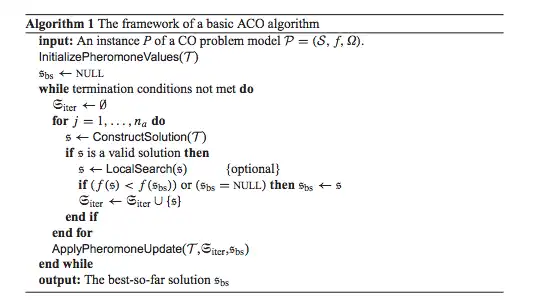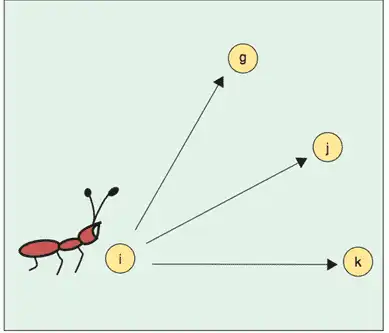INTRODUCTION
MATLAB implementation of ACO for Discrete and Combinatorial Optimization.
Ant Colony Optimization (ACO) is a Swarm Intelligence technique which inspired from the foraging behaviour of real ant colonies. The ants deposit pheromone on the ground in order to mark the route for identification of their routes from the nest to food that should be followed by other members of the colony. This ACO exploits an optimization mechanism for solving discrete optimization problems in various engineering domain. From the early nineties, when the first Ant Colony Optimization algorithm was proposed, ACO attracted the attention of increasing numbers of researchers and many successful applications are now available. Moreover, a substantial corpus of theoretical results is becoming available that provides useful guidelines to researchers and practitioners in further applications of ACO.
Swarm intelligence is a relatively new approach to problem solving that takes inspiration from the social behaviors of insects and of other animals. In particular, ants have inspired a number of methods and techniques among which the most studied and the most successful is the general purpose optimization technique known as ant colony optimization. Ant colony optimization (ACO) takes inspiration from the foraging behavior of some ant species. These ants deposit pheromone on the ground in order to mark some favorable path that should be followed by other members of the colony. Ant colony optimization exploits a similar mechanism for solving optimization problems.

Basic Ant Colony Optimization Algorithm
Ant colony optimization (ACO) algorithm was proposed by Marco Dorigo. The ACO algorithm is a metaheuristic inspired by the behavior of real ants in their search for the shortest path to food sources. Ants tend to choose the paths marked by the strongest pheromone concentration. The ACO algorithm is an essential system based on agents that simulates the natural behavior of ants, including the mechanisms of cooperation and adaptation. The ACO algorithm simulates the techniques employed by real ants to rapidly establish the shortest route from a food source to their nest and vice versa without the use of visual information. The ACO algorithm consists of a number of cycles (iterations) of solution construction. In each iteration, a number of ants construct complete solutions by using heuristic information and the collected experiences of previous groups of ants. These collected experiences are represented by the pheromone trail which is deposited on the constituent elements of a solution. Pheromone can be deposited on the components and/or the connections used in a solution depending on the problem.
Biological Inspiration
In the forties and fifties of the twentieth century, the French entomologist Pierre-Paul Grasse´ observed that some species of termites react to what he called “significant stimuli”. He observed that the effects of these reactions can act as new significant stimuli for both the insect that produced them and for the other insects in the colony. Grasse´ used the term stigmergy to describe this particular type of communication in which the “workers are stimulated by the performance they have achieved”
